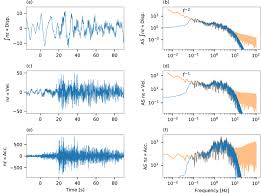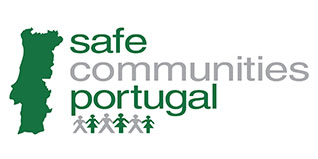Azores Situation Report Wednesday 17th April 2024
Azores with yellow warnings due to rain until Wednesday
The Portuguese Institute of the Sea and Atmosphere (IPMA) today issued yellow warnings until Wednesday the 17th April for the nine islands of the Azores, due to forecasts of sometimes heavy rain.
According to IPMA, for the islands of the Western group (Flores and Corvo), the warning of “sometimes heavy precipitation, which may be accompanied by thunderstorms”, will be in force between 5pm local time today (6pm in Lisbon) and to 11:00 on Tuesday.
In the Eastern group (São Miguel and Santa Maria), the warning is valid between 07:00 on Tuesday and 02:00 on Wednesday.
IPMA’s yellow warning due to the forecast of rain “sometimes heavy, which may be accompanied by thunderstorms”, is also in force for the islands of the Central group of the Azores (Faial, Pico, São Jorge, Terceira and Graciosa) from 02:00 to 23 :00 on Tuesday.
The yellow warning, the least serious on a scale of three, is issued whenever there is a risk situation for certain activities depending on the weather situation.
A new life was born aboard an Air Force plane in the Azores.
A baby was born this Monday on board an Air Force plane in the Azores.
According to a statement from the Portuguese Air Force, “the C-295M plane had just taken off from the island of Santa Maria, heading to São Miguel, when a girl decided it was time to be born”, it was around 8:05 am.
Shortly before, the crew of Squadron 502 – “Elefantes”, on permanent alert on the island of Terceira “had been activated to transport a pregnant woman aged 35 years and 35 weeks gestation, with contractions every two minutes”.
 The statement further explains that “the future mother boarded accompanied by a civil health team and shortly afterwards the plane took off towards Ponta Delgada, with the pregnant woman entering the final stage of labour. Ten minutes after taking off, the baby was born on board the Air Force plane, in the middle of the Atlantic Ocean.”
The statement further explains that “the future mother boarded accompanied by a civil health team and shortly afterwards the plane took off towards Ponta Delgada, with the pregnant woman entering the final stage of labour. Ten minutes after taking off, the baby was born on board the Air Force plane, in the middle of the Atlantic Ocean.”
Mother and baby were taken to the local hospital and were found to be in good health.
This is already the fourth birth aboard the Portuguese Air Force’s C-295M aircraft since it entered into operation in 2009 – with two twins born in one of the missions – and the 35th birth aboard Air Force aircraft, with the first occurred on July 13, 1993, on a C-212 Aviocar plane.
HDES Cerebrovascular Unit reopened Monday 15th with a permanent medical team.
Closed since the pandemic, the acute stroke treatment unit reopens today with capacity for four beds and a full-time medical team.
The Cerebrovascular Diseases Unit of the Hospital do Divino Espírito Santo (HDES), in Ponta Delgada, will once again have a physical space in the hospital unit, with capacity for four beds and, for the first time, a team permanent doctor.
Closed since 2020, due to constraints associated with the pandemic, the treatment and monitoring unit for patients with acute stroke reopens today, with “shared” coordination between the Neurology and Internal Medicine services at HDES.
The regional coordinator of Via Verde AVC, Pedro Lopes, explains that the novelty in this reopening of the physical space is the “reinforcement of a medical team dedicated to this cerebrovascular unit and Via Verde do AVC”.
“In practical terms, this means that we always have a medical team dedicated to acute stroke treatment, 24 hours a day, seven days a week, which has never happened in this hospital, nor in any other hospital in the Azores”, he highlights.
According to the neurologist, there are several advantages associated with this reopening.
“First, in the acute treatment of stroke. In the first few hours, after the onset of symptoms, there are treatments that can be carried out, such as fibrinolysis which is carried out in the cerebrovascular diseases unit itself and mechanical thrombectomy which does not exist in the Azores, with patients being referred to Madeira, despite the entire process being triggered in our unit”, he explains.
 “What we achieved with the physical unit and the presence of permanent doctors is faster care for these patients, better monitoring of factors such as blood pressure, blood sugar levels, which are fundamental in the first hours after a stroke and, therefore, , better results and better care provision”.
“What we achieved with the physical unit and the presence of permanent doctors is faster care for these patients, better monitoring of factors such as blood pressure, blood sugar levels, which are fundamental in the first hours after a stroke and, therefore, , better results and better care provision”.
The doctor also made the point of highlighting that, despite the physical space having been closed since the pandemic, “we never stopped having the unit. It worked with prevention doctors who were called when necessary”, he adds.
Asked about referring users to the Cerebrovascular Diseases Unit at the hospital, Pedro Lopes explains that it all starts with calling 112 and entering the hospital’s emergency room, alerting them to the symptoms of a stroke.
“If you notice stroke symptoms, whether by yourself or other people, such as mouth on one side, lack of strength on one side of the body or difficulty speaking, you should call 112 and explain the situation in as much detail as possible. 112 will oversee directing you to the hospital. When these patients arrive at the hospital, the Via Verde AVC is activated, activating this specific medical team from the Cerebrovascular Diseases Unit and triggering the entire process”, he explains.
Seismic crisis in Terceira with abnormal seismicity value only
The ongoing seismic crisis on the island of Terceira, in the Azores, focuses on the Santa Bárbara volcano area, but does not present any abnormal values other than seismicity, said the president of the Seismo-volcaeic Information and Surveillance Centre.
Gabriela Queiroz, from the Azores Seismo-volcaeic Information and Surveillance Centre (CIVISA), explained that, on the island of Terceira, there has been “seismic activity cantered essentially in the area of the Santa Bárbara volcano”, which “has already been seen feeling more intensely since June 2022.”
“We have raised our alert to V2 (possible reactivation of the system — signs of moderate activity) since that time and what we have seen is that this seismic activity has manifested itself in more intense and less intense phases. We are currently in a more intense situation”, says the head of CIVISA.
The Santa Bárbara volcano, on the island of Terceira, is considered an active volcano, having erupted for the last time in 1761, featuring two calderas.
Since June 24th, 2022, seismic activity in the Santa Bárbara volcano has been “above normal reference values”, with scientific alert level V2.
Gabriela Queiroz does not dissociate, “at all, [the crisis] from what has been happening in the archipelago for about two years, or the seismic crisis in São Jorge, and even the activity that has developed to the west of the island of Faial”.
The volcanologist points out that CIVISA’s monitoring systems “do not indicate significant variations in either the deformation of the coast or the release of volcanic gases”, with the parameter that is “clearly above average being seismic activity”.
 “We are always monitoring the evolution of the situation in order to eventually detect any sign or not”, points out the volcanologist.
“We are always monitoring the evolution of the situation in order to eventually detect any sign or not”, points out the volcanologist.
Asked whether there are reasons for concern, Gabriela Queiroz responds that we live in a region “with active volcanic systems”, and we must “be aware of the situation”.
The last earthquake recorded on the island of Terceira, measuring 3.7 on the Richter scale, was recorded on Sunday night with the epicentre southwest of Agualva, on the island of Terceira, according to the Portuguese Institute of the Sea and Atmosphere (IPMA).
According to IPMA, the earthquake was recorded at the Azores Archipelago Seismic Network stations on Sunday at 11:56 pm, with the epicenter located approximately six kilometers southwest of Agualva.
